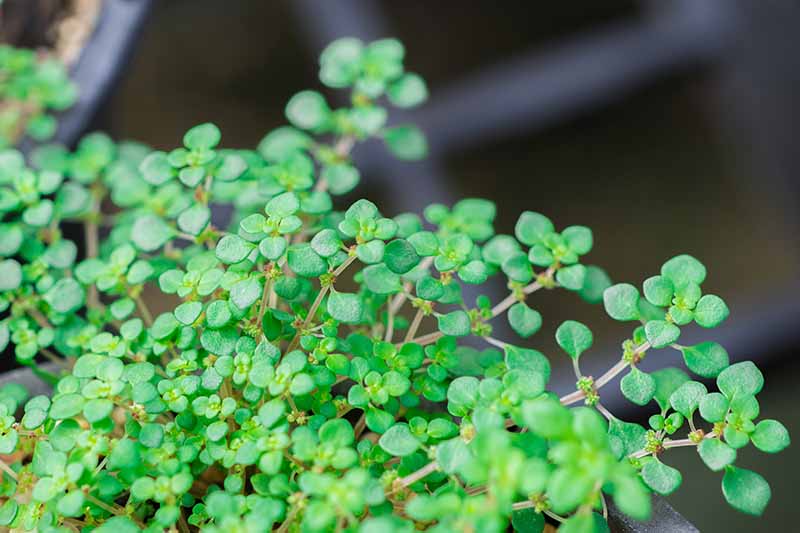Artillery plants, scientifically known as Pilea microphylla, are a popular houseplant choice thanks to their unique leaves and easy care requirements. However, a common issue that artillery plant owners face is curling of the leaves, which can be concerning. In this comprehensive guide, we will explore the various reasons for curled leaves on artillery plants and how to fix them.
Overwatering
Excessive watering is one of the most frequent causes of leaf curling in artillery plants These tropical plants are susceptible to root rot if overwatered, leading to stressed roots unable to uptake nutrients effectively The plant responds by curling its leaves to reduce transpiration.
To resolve overwatering issues, reassess your watering habits. Allow the top inch of soil to dry out before watering again. Use well-draining soil to prevent sogginess. Water less frequently but deeply, and ensure the pot has drainage holes. Leaves should uncurl once the soil dries out.
Underwatering
While overwatering causes leaf curl, underwatering can too If the soil becomes extremely dry, the leaves will shrivel and curl inwards to conserve moisture
Check the soil moisture before watering. If the top few inches are bone dry, give the plant a thorough soak so water reaches the roots. After, allow the soil to partly dry before repeating. A moisture meter can help determine when to water accurately.
Low Humidity
Artillery plants thrive in humid conditions. When humidity is too low, the leaves lose moisture faster than the roots can uptake it. This moisture imbalance makes the leaves curl inwards to reduce transpiration rates.
Increase humidity around your plant by misting the leaves, using a pebble tray, or grouping plants together. Keep the plant away from heat vents and direct sunlight, which worsen dry air. A humidifier in dry rooms can also help.
Excessive Light
Too much direct light can stress artillery plants and cause leaf curling. The leaves roll inwards to minimize exposure and prevent water loss.
Artillery plants do best in bright, indirect light. Move the plant to a shaded spot, or use a sheer curtain to filter harsh sun rays. Rotate the plant weekly so all sides get even lighting. Leaf scorch indicates too much light.
Temperature Stress
As tropical plants, artillery plants prefer warm conditions between 60-80°F. Sudden temperature drops or exposure to cold drafts can shock the plant, resulting in curled leaves. The curled shape helps limit moisture loss.
Keep artillery plants away from drafty windows, AC vents, and other sources of temperature fluctuations. Move the plant to a warmer spot in cooler months. Maintain indoor temperatures within the ideal range for these plants.
Nutrient Deficiency
Lack of key nutrients like nitrogen, phosphorus, and potassium can impair the plant’s growth and lead to curled leaves. Nutrient deficiencies cause overall weakness in the plant.
Fertilize monthly in the growing season with a balanced liquid fertilizer. Avoid over-fertilizing, which can damage roots. Check for signs of deficiencies like yellowing, and adjust your feeding schedule accordingly.
Pest Infestations
Spider mites, mealybugs, aphids, and other common houseplant pests can attack artillery plants. Their feeding damages leaves, causing curling and abnormal growth. The plant curls its leaves to defend itself from pests.
Inspect undersides of leaves for bugs or webbing. Isolate affected plants, and use insecticidal soap to remove pests. Check other plants for signs of infestation too. Repeat treatments until all signs of pests are gone.
Improper Potting
If the artillery plant’s container is too small, the restricted roots are unable to absorb enough moisture and nutrients. The lack of resources causes leaves to curl.
Repot into a container one size larger when the roots fill the existing pot. Use a potting mix with perlite or bark chips for drainage. Make sure the pot has drainage holes.
Natural Growth Habit
In some cases, leaf curling is simply part of the artillery plant’s natural growth pattern. The leaves emerge tightly furled from the center, then gradually unfurl as they mature. Mild curling is normal, especially in younger leaves.
As long as new growth looks healthy and the plant seems vigorous, slight curling is not problematic. Monitor for other issues, but don’t worry about natural curling. Gently unfurling the leaves can help them flatten out.
How to Fix Curled Leaves
- Assess watering habits and soil moisture before adjusting your schedule.
- Increase humidity through misting, pebble trays and grouping plants.
- Move plant to a shaded spot away from direct sunlight.
- Keep temperatures ideally between 60-80°F.
- Fertilize monthly during growing season.
- Inspect and treat plant for pests like spider mites.
- Repot if plant is rootbound or pot is too small.
- Gently unfurl new curled leaves to help them flatten.
When to Worry About Leaf Curling
Monitor your artillery plant closely if leaf curling persists or worsens despite fixing care issues. Rapid leaf yellowing or browning indicates a severe problem, requiring immediate action. Seek advice from plant experts if problems continue. Reassessing care, humidity, light, pests and other factors can get your plant back to health. With proper troubleshooting and care, artillery plant leaf curl can be successfully resolved.

Light and Shadow Play
Leaves that are more bleached than a 90s boy bands hairdo could be getting too much sun. Conversely, if theyre stretching out like theyre trying to snag the last cookie from the jar, theyre likely not getting enough light.
Light Levels: Finding the Sweet Spot
Light is a fickle friend to plants. Too much and your plants leaves might as well be in a fryer; too little and they become as limp as overcooked noodles. Bright, indirect light is the sweet spot for keeping leaves perky.
Why are my Pepper Plant Leaves Curling? How to Stop Leaf Roll – Pepper Geek
FAQ
How do you fix curling leaves on plants?
Can curled leaves go back to normal?
What deficiency causes curling of leaves?
